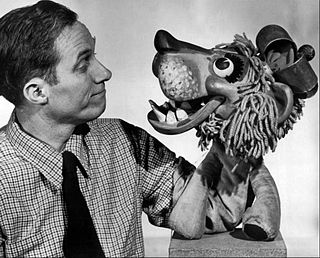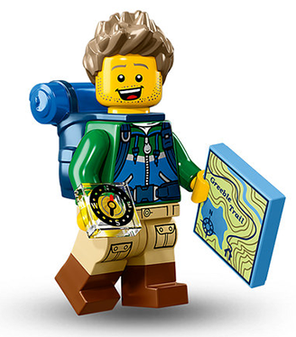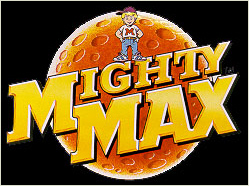Related Research Articles
An action figure is a poseable character model figure made most commonly of plastic, and often based upon characters from a film, comic book, military, video game or television program; fictional or historical. These figures are usually marketed toward boys and adult collectors. The term was coined by Hasbro in 1964 to market G.I. Joe to boys.

Mr. Potato Head is an American toy brand consisting of a plastic model of a potato "head" to which a variety of plastic parts can attach — typically ears, eyes, shoes, hat, nose, pants and mouth.

Action Man is an action figure launched in Britain in 1966 by Palitoy as a licensed copy of Hasbro's American "movable fighting man", G.I. Joe.
Big Jim was a line of action figure toys produced from 1972 through 1986 by Mattel for the North American and European markets. He was renamed Kid Acero in Latin America and, for a short period of time, Mark Strong in Europe. Originally inspired by G.I. Joe, the Big Jim line was smaller in size and each figure included a push button in the back that made the character execute a karate chop action. The action figure's arms were made of a soft plastic/vinyl material and contained a mechanism that simulated the bulge of a biceps when the elbow was bent. Big Jim was less military-oriented than the G.I. Joe line, having more of a secret agent motif, but also had a large variety of outfits and situations available including sports, space exploration, martial arts, hunting, western, camping, fishing, and photography.

The iDog is a robot dog toy designed and manufactured by Sega Toys. An iDog figure receives input from an external music source, such as an MP3 player or iPod, and will light up and "dance" to the music's rhythm. It is marketed as the eDog in Germany, Italy and the Netherlands.

Jayce and the Wheeled Warriors is an animated show which was first broadcast on TF1 on September 9, 1985, on the block Salut les p'tits loups !, and eventually on September 16 in the United States in syndication. It was produced by DIC Audiovisuel and animated by the Japanese animation studios Sunrise, Shaft, Studio Giants, Studio Look and Swan Production. The show, which ran for 65 thirty-minute episodes, was created to support Mattel's Wheeled Warriors toyline. The show had an ongoing plot which was left unresolved, with no series finale.

A hand puppet is a type of puppet that is controlled by the hands that occupies the interior of the puppet. A glove puppet is a variation of hand puppets. Rod puppets require one of the puppeteer's hands inside the puppet glove holding a rod which controls the head, and the puppet's body then hangs over most or all of the forearm of the puppeteer, and possibly extends further. Other parts of the puppet may be controlled by different means, e.g., by rods operated by the puppeteer's free hand, or strings or levers pulled the head or body. A smaller variety, simple hand puppets often have no significant manipulable parts at all. Finger puppets are not hand puppets as they are used only on a finger.

A Lego minifigure, often simply referred to as a Lego figure or a minifig, is a small plastic articulated figurine made of special Lego bricks produced by Danish building toy manufacturer The Lego Group. They were first produced in 1978 and have been a success, with over 4 billion produced worldwide as of 2020. Minifigures are usually found within Lego sets, although they are also sold separately as collectables in blind bags, or can be custom-built in Lego stores and on lego.com. While some are named as specific characters, either licensed from already existing franchises or of Lego's own creation, many are unnamed and are designed simply to fit within a certain theme. They are highly customizable, and parts from different figures can be mixed and matched, resulting in many combinations.

Majorette is a French toy manufacturer which mostly produces small Die-cast scale model cars, commercial vehicles, aircraft, and other vehicles, particularly in 1:64 scale. This is a normal 2.5–3 in (64–76 mm) size, thus Majorette has sometimes been called "the Matchbox of France". Traditionally, production was centered in the urban area of Lyon, but diecast models are now made in China, the Philippines, Taiwan, Thailand and Vietnam.
Husky was a brand name for a line of business die-cast toy scale model vehicles manufactured by defunct company Mettoy Playcraft Ltd. of Swansea, Wales, which also made the larger Corgi Toys. Husky Models was re-branded "Corgi Junior" in 1970, and a further range called "Corgi Rockets" was developed to race on track sets.

Playart was a toy company owned by Hong Kong industrialist Duncan Tong (唐鼎康) that specialized in die-cas toy cars, similar in size and style to Hot Wheels, Matchbox or Tomica. Cars were well done, but were often diecast seconds from other companies like Yatming or Tomica. Cars were made from 1965 to 1983 at the factory in San Po Kong, Kowloon, Hong Kong. Plastic cars and trucks of 1:43, and 1:24 scale were also made, while trains and other theme toys also appeared.
Littlest Pet Shop is a toy franchise and cartoon series owned by Hasbro and currently under license with Basic Fun!. The original toy series was produced by Kenner in the early 1990s. An animated television series was made in 1995 by Sunbow Productions and Jean Chalopin Creativite et Developpement, based on the franchise.

Batman action figures have been produced since the 1940s. These action figures, inspired by the character's appearance in comics and serials, were created by DC Comics and manufactured by various toy companies. These figures were made of various materials such as wood, tin, and plastic. They were typically between 6 and 8 inches in height and featured movable joints that allowed them to be posed in various positions.

Mighty Max was a series of toys that were manufactured by Bluebird Toys PLC in the UK in 1992. The toys were similar to the earlier Polly Pocket toyline, but these toys were marketed primarily towards young boys. In Canada and the United States, they were distributed by Irwin Toy Limited and Mattel Inc. respectively. The original toyline consisted mainly of "Doom Zones" and "Horror Heads". "Doom Zones" were small playsets with a horror theme and featured miniature figurines of menacing creatures and the hero Max, a young boy with blond hair, jeans, a white t-shirt with a red "M" on it, and a baseball cap which also always had an "M" on it. The "Horror Heads" were smaller-sized playsets, also shaped like the heads of creatures and contained miniature figures. It was later adapted into a TV series, as well as a tie-in video game The Adventures of Mighty Max produced by Ocean Software for the Super NES and Mega Drive/Genesis.

Topper Corporation was a United States toy and board game manufacturer based in Elizabeth, New Jersey. The company, founded and run by Henry Orenstein, a holocaust survivor, produced toys under several brand names including: Johnny Lightning, Johnny Seven OMA, Dawn doll, and Suzy Homemaker.

Action figures based on the Teenage Mutant Ninja Turtles franchise have been produced by Playmates Toys since 1988. Staff artists at the Northampton, Massachusetts based Mirage Studios have provided conceptual designs for many of the figures, vehicles, and playsets and are credited on the packaging of the products they created.

Between 1978 and 1985, Kenner produced and sold action figures based on the Star Wars franchise. From a line of over 100 unique toys, a total of more than 300 million units were sold during their original run. Kenner began producing new Star Wars action figures in 1995.

Morris & Stone, Ltd., which later changed its name to the more well-known Budgie Toys, was a British die-cast toy distributor turned manufacturer, based in London. The company first specialised in horse-drawn carriages and coaches. It later made a wide variety of miniature cars and trucks.
Stretch Screamers was a series of electronic toys by Manley Toys Limited of Hong Kong.
References
- ↑ Vittachi, Nury (1993). Only in Hong Kong. Printflex. p. 258. ISBN 9789621001528.
- ↑ O'Reilly, David (February 6, 1992). "New Toys, Old Stereotypes: At the annual Toy Fair, it was child's play to tell the novelties for boys from those for girls". Philadelphia Inquirer . p. H1.